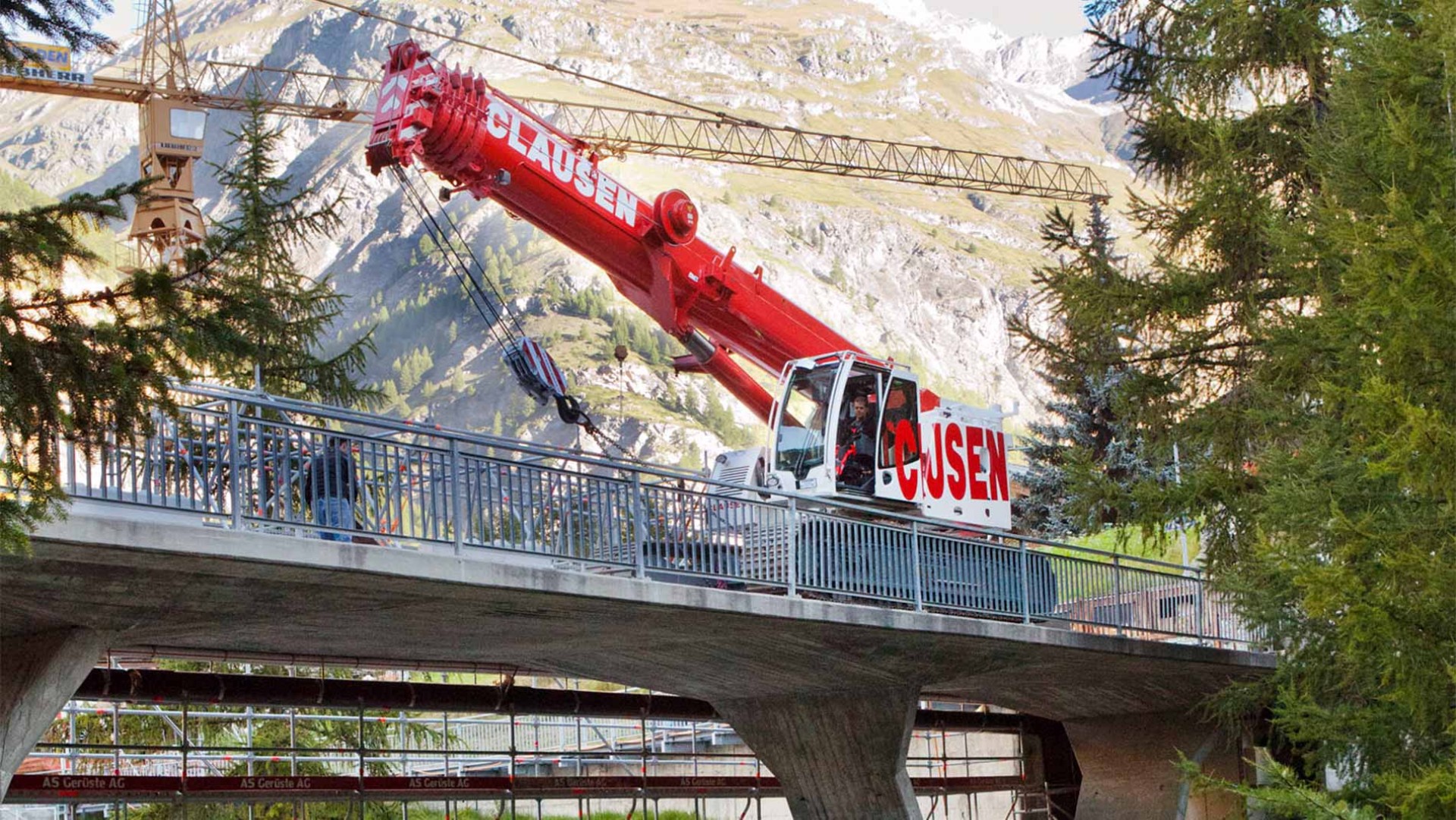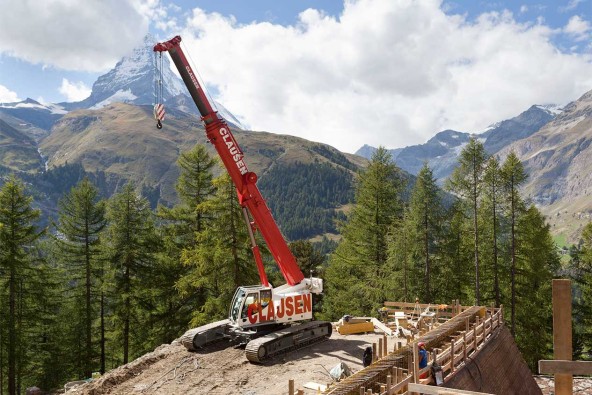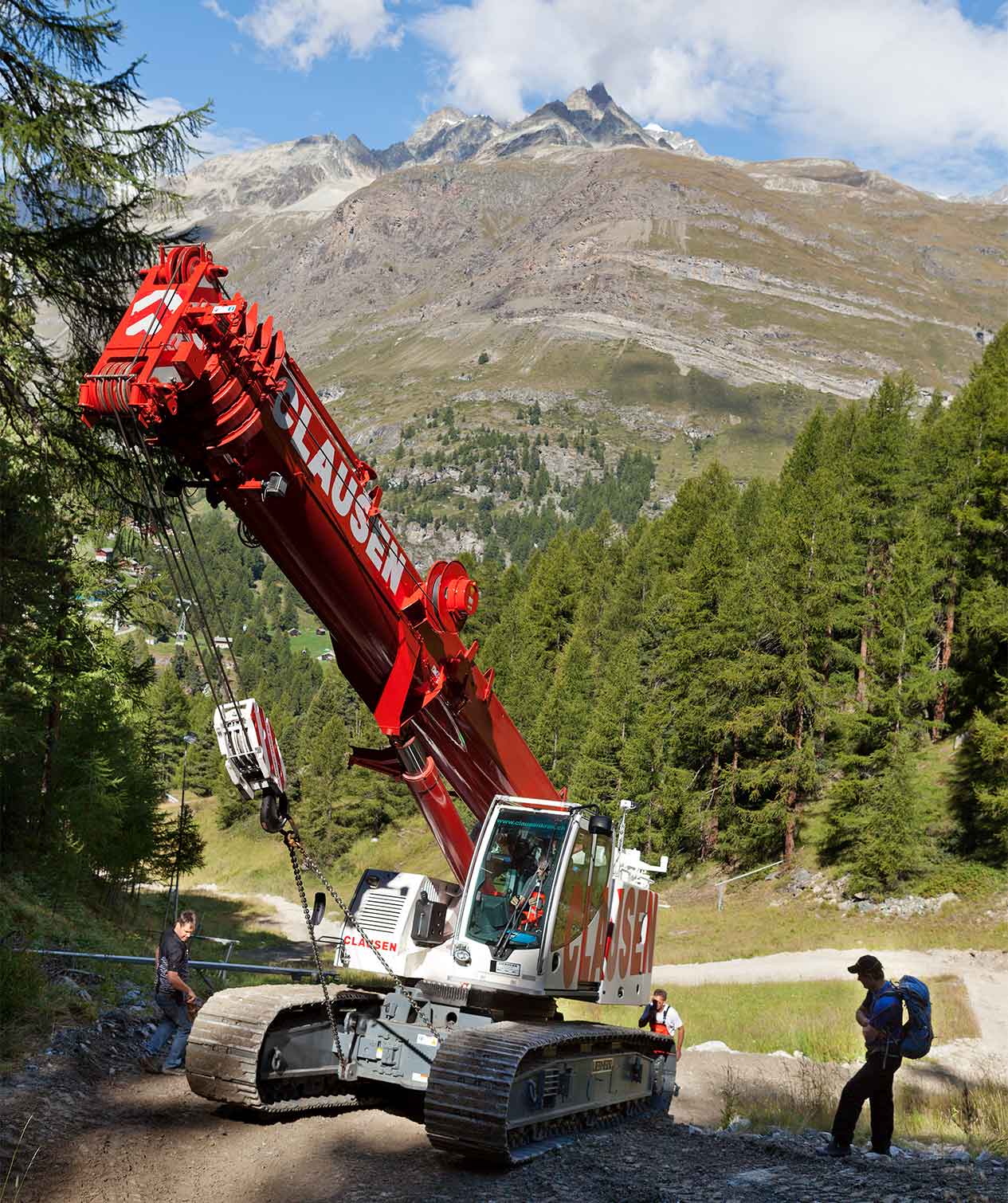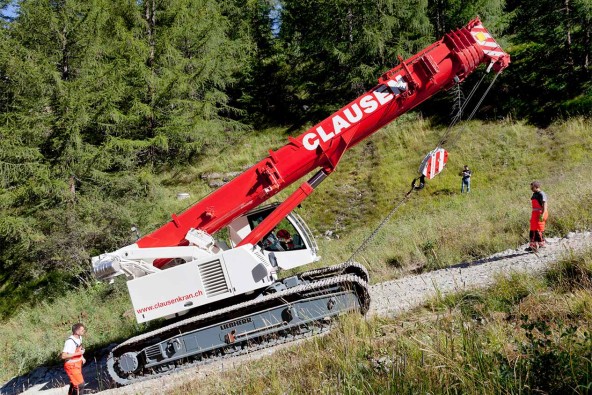
7 minutes
Liebherr LTR 1060 crawler crane in high alpine use
At tunnel works on the Swiss Gornergrat railway, the second highest mountain railway in Europe, the LTR 1060 telescopic crawler crane put its skills to the test. With technical support from the Liebherr specialists it navigated a route beset with gravel, bends, and enormous slopes. In doing so, the telescopic crawler crane demonstrated once again its off-road ability under extreme conditions.

On target: against the backdrop of the Matterhorn the LTR 1060 works on the roof of a mountain railway tunnel.
The task
The Liebherr LTR 1060 telescopic crane of Wallis-based crane operator Clausen has already proven itself in high alpine terrain on several occasions in the past. But when used in Zermatt, in the Swiss canton of Valais, both crane and team found themselves faced with an entire range of challenges.
The task for crane operator Geri Clausen was: to extend a tunnel of the Swiss Gornergrat railway for the inclusion of a ski run. The difficulty in this project was mainly in the approach to the site at an altitude of 2020 metres. The road led through a 920 metre long gravel path with the tightest of bends and gradients of up to 40 percent.
By clicking on “ACCEPT”, you consent to the data transmission to Google for this video pursuant to Art. 6 para. 1 point a GDPR. If you do not want to consent to each YouTube video individually in the future and want to be able to load them without this blocker, you can also select “Always accept YouTube videos” and thus also consent to the respectively associated data transmissions to Google for all other YouTube videos that you will access on our website in the future.
You can withdraw given consents at any time with effect for the future and thus prevent the further transmission of your data by deselecting the respective service under “Miscellaneous services (optional)” in the settings (later also accessible via the “Privacy Settings” in the footer of our website).
For further information, please refer to our Data Protection Declaration and the Google Privacy Policy.*Google Ireland Limited, Gordon House, Barrow Street, Dublin 4, Ireland; parent company: Google LLC, 1600 Amphitheatre Parkway, Mountain View, CA 94043, USA** Note: The data transfer to the USA associated with the data transmission to Google takes place on the basis of the European Commission’s adequacy decision of 10 July 2023 (EU-U.S. Data Privacy Framework).In high alpine use in Swiss Zermatt the LTR 1060 masters gravel roads with tight bends and gradients of up to 40 percent. In this way, the telescopic crawler crane from Liebherr once again puts its off-road capability to the test.

Geri Clausen manoeuvred his crane through a narrow, steep bend with great skill.
Safe against overturning despite tight bends
A 920 metre long winding route to the job site, with an altitude difference of 180 metres, faces the LTR 1060.
Liebherr's general manager design department Hans-Dieter Willim and his team calculated the overall centre of gravity of the machine in advance, to ensure rollover safety and steerability when navigating the bends and ascents. The result: The LTR 1060 can travel the route without ballast, at a total weight of 38 tonnes with a boom angle of 20°.
Steerability at narrow crawler track
Due to the narrowness of the path, the LTR 1060 has only a narrow track on which to navigate the serpentine. The accompanying challenges: The steering capability is severely limited by the unfavourable ratio between the crawler length and the track width.
On the tight bends the LTR 1060 must corner at precisely defined locations. Liebherr recommends putting squared timbers under the inner curve crawler chains as pivots. In addition, the direction of travel of the crawler chassis is chosen so that the chain drives are at the rear. This ensures a taut crawler chain.

The LTR 1060 masters the extreme slope with flying colours.
Checking the gearbox temperature under the enormous burden
The long, steep path stressed the gearbox heavily. The challenge is to keep the temperature of the gearbox and rollers below the maximum allowable values.
Liebherr's general manager design department Hans-Dieter Willim checked the temperature curve of the critical components on the spot using a thermal imaging camera. After consultation with the gearbox manufacturer Liebherr in Biberach, Germany, the gearbox oil level was also lowered slightly in advance. This prevents splashing losses caused by the oil being swirled around.
The conclusion
"We have lots of sites where this highly manoeuvrable crane is simply ideal", concludes crane operator Geri Clausen following the successful completion of the high-altitude job.

